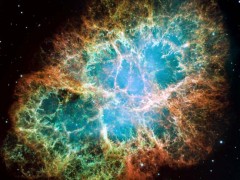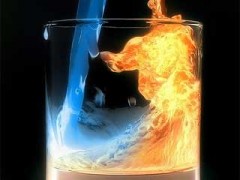
Posted May 26, 2011
by Paul LaViolette
The subquantum kinetics physics theory predicts that the inertial mass of a body can be changed by altering either its electric or gravitational potential. High negative voltage potentials or positive G potentials (gravity hills) are predicted to reduce inertial mass, while high positive voltage potentials or negative G potentials (gravity wells) are predicted to increase inertial mass. At present, a considerable amount of theoretical work needs to be done to determine how large a voltage potential would be needed to produce the predicted effect. Nevertheless, even without a specific quantitative prediction, we felt that if an effect was seen, this would provide strong support for the subquantum kinetics paradigm since such mass altering effects are not predicted by standard physics theory. For some time we have been interested to search for such an effect; for example, see Project No. 16 of the Starburst Projects List.
On Saturday May 21, 2011 Starburst Foundation researcher Paul LaViolette conducted this experiment in the New York laboratory of Alexi Guy Obolensky, with Mr. Obolensky and his assistant John being directly involved in the measurement process. Two mechanical pocket watches were used to check for any sign of inertial mass variation. These pocket watches use a torsion pendulum for their timing, that is, a wheel having a mass at its rim and a spring applying torque. Any change in the mass of the wheel would reflect as a change in the ticking rate of the watch. Under normal conditions, the two watches were found to deviate in their timing by less than 0.1 seconds over a 15 minute period, hence by less than one part in 104. One watch was placed within a metallic sphere which was charged to -200 kilovolts for a period of 15 minutes. The other watch was kept some distance from the sphere and was used as a time reference. The watches were started simultaneously, the one was placed within its sphere, the sphere energized and after 15 minutes discharged once again, and then the two watches were finally brought together and simultaneously stopped.
The outcome of the experiment was that no time difference was seen between the two watches. Hence if any inertial mass change was in fact induced during the 15 minute test period, it would have had to be less than one part in 104. The experiment was run once with the target watch grounded to its metal sphere by a wire inside the sphere and once with the watch electrically isolated from its enclosing sphere. Also a third trial was performed in which the sphere was repeatedly charged and then completely discharged 15 times per second during the 15 minute test period. Again, even in this pulsed mode, no evidence of a change of inertial mass.
Erwin Saxl in 1964 claimed to have observed that the period of a torsion pendulum had changed by 0.4 to 0.7% when energized to +5000 V or -5000 V. Liu et al. (1998) later checked Saxl's results energizing a torsion pendulum to ±2000 volts. They saw no period change from the application of the voltage potential indicating that if there had been any change of inertial mass it would have had to be less than one part per billion. Our findings are consistent with those of Liu et al. Although our time measurement resolution was far less, we did extend this measurement to voltages 100 fold greater than used by Liu et al.
Mikhailov (1999) measured the oscillation period of an electron plasma confined within an electrically charged sphere and found evidence that the electron's inertial mass had varied by ±0.3% when the sphere was charged respectively to ±3000 volts. LaViolette had reasoned that if this mass change effect was due to an electrogravitic inertial mass change effect of the sort predicted by subquantum kinetics, then a similar inertial mass change should be observed for neutral matter as well. Hence the incentive to conduct the stop watch experiment. The null result of this watch experiment suggests that the phenomenon observed by Mikhailov may be due to another effect. For example, Assis (1993) attributes the electron inertial mass variation observed by Mikhailov to an effect predicted by Weber's theory of electromagnetism.
E. Saxl Nature 203 (1964):136-139.
Y. Liu, et al. Physics Letters A 244 (1998):1-3.
V. F. Mikhailov Ann. Fonde. Louis de Broglie 24 (1999):161-169.
A. K. T. Assis J. Phys. Soc. Japan 62 (1993):1418-1422.
Letter to the editor sent to Physics Today magazine on May 22, 1990
Will the Hubble Telescope Detect a Limit to Galaxy Redshifts?
May 22, 1990
Paul A. LaViolette, Ph.D.
The Starburst Foundation
2615 S.E. 111th Ave., #10
Portland, Oregon 97266
With the launching of the Hubble Space Telescope astronomers are anxiously waiting to see what will be revealed to lie at the "edge" of the universe. The big bang theory predicts that few galaxies should be observed with redshifts much greater than 4, simply because there is not enough time for them to form. This assumes an age for the big bang universe of 9.4 billion years, based on the findings of Reid et al.(1) and Tully(2) which suggest Ho = 100 km/sec/Mpc. Galaxy formation models require at least 750 million years to form light-emitting galaxies, and according to the big bang cosmology, galaxies with z > 4 would necessarily be younger than this. If there is indeed a cut-off at around this value, the Hubble Telescope would be able to see it. The telescope should be able to detect light emitting objects with redshifts even as high as 30, if such exist. So observations with the Space Telescope could provide a crucial test of the validity of the big bang theory.
However, I predict that contrary to expectations, galaxies will be found which will have redshifts greater than 4 and, in fact, that they will be found in great numbers. This prediction arises from a quantum theory that projects a cosmology quite different from that of the big bang theory. This subquantum kinetics(3) cosmology predicts a static universe of unlimited size in which matter arises through a process of continuous creation, creation rates being highest in the vicinity of existing matter. The cosmology also predicts the existence of a tired-light cosmological redshift for photons travelling through intergalactic space. As was demonstrated in 1986,(4) this tired-light prediction fits observational data better than the expanding universe Doppler shift hypothesis, on four different cosmology tests.
Subquantum kinetics suggests that galaxies should be present in space at very high redshifts, much higher than is predicted by the big bang theory. If this theory is correct, then the expected cutoff in galaxy redshifts should not be observed. I expect that the highest observable galaxy redshift will possibly be in the vicinity of z = 30 and will be observer limited (determined by the light gathering power of the Hubble Telescope, rather than by cosmological factors). If such a discovery is made, it will probably be one of the most perplexing findings of the Hubble mission. Perhaps within the next year we will have an answer as to which cosmology is correct.
References
1. Reid, M. J., et al., Ap.J. 330, 809 (1988).
2. Tully, R. B., Nature 334, 209 (1988).
3. P. A. LaViolette, Intl. J. General Systems, 11, 281, 295, 329 (1985).
4. P. A. LaViolette, Ap.J. 301, 544 (1986).
Cover letter sent with submitted letter:
Response received from Physics Today saying they would not publish the letter:
.
During the 21 years elapsing since this prediction was mailed to Physics Today, many galaxies have been discovered with redshift greater than z = 4.
Here is a recent example of a z = 10 candidate announced January 27, 2011:
https://www.nature.com/nature/journal/v469/n7331/full/nature09717.html
Bottom line:
Over the years another subquantum kinetics prediction will have been vindicated.
 On April 12th, 2011, the Crab Nebula emitted a gamma ray flare lasting six days that was five times more intense than any of the others that were previously observed and 30 times brighter than the nebula’s normal gamma ray intensity. On April 16th an even brighter flare occurred but faded out over a period of two days. This new evidence, which perplexes astronomers, is easily explained if the Crab Nebula’s unusually strong synchrotron emission does not originate from its associated neutron star but from a volley of galactic cosmic rays striking it face on. For more on this visit our superwave forum at:
On April 12th, 2011, the Crab Nebula emitted a gamma ray flare lasting six days that was five times more intense than any of the others that were previously observed and 30 times brighter than the nebula’s normal gamma ray intensity. On April 16th an even brighter flare occurred but faded out over a period of two days. This new evidence, which perplexes astronomers, is easily explained if the Crab Nebula’s unusually strong synchrotron emission does not originate from its associated neutron star but from a volley of galactic cosmic rays striking it face on. For more on this visit our superwave forum at:
https://starburstfound.org/superwaveblog/.
 An inventor referred to as "Mister X" appeared on the "Late Night in the Midlands" radio talk show on Wednesday May 4th, 2011 at 10 PM EST. Although pre show publicity claimed that he would reveal all the details about his water fuel technology, in fact he kept the details to himself. It was also claimed that he has survived ten murder attempts, but again he did not discuss this. He only made reference to the assassinations of Stan Meyer and John Kanzius. The inventor implied he was reticent because his technology was under review by investors and he mentioned that he had received threats if he were to advocate his hydrogen gas generation technology be used for increasing engine efficiencies by more than 25% - 30%.
An inventor referred to as "Mister X" appeared on the "Late Night in the Midlands" radio talk show on Wednesday May 4th, 2011 at 10 PM EST. Although pre show publicity claimed that he would reveal all the details about his water fuel technology, in fact he kept the details to himself. It was also claimed that he has survived ten murder attempts, but again he did not discuss this. He only made reference to the assassinations of Stan Meyer and John Kanzius. The inventor implied he was reticent because his technology was under review by investors and he mentioned that he had received threats if he were to advocate his hydrogen gas generation technology be used for increasing engine efficiencies by more than 25% - 30%.
Nevertheless the radio interview was interesting and some sites were suggested where one could visit to learn how to build overunity hydrogen generators. He directed people to the website panaceauniversity.org where he suggested clicking the link labeled hydroxy booster technology. Also he recommended listening to the you tube videos posted by zerofossilfuels. This individual has posted 267 consecutive videos. Mr. X recommended starting at video #12 and viewing as far as #133, and to pay particular attention to video #139. Video #12 is however difficult to locate and whether it is not certain that the videos necessarily link in consecutive order. The best would be to find a website that posts links to all 267 of them.
It should be commented that the open system paradigm that subquantum kinetics uses permits over-unity energy production in nature. That is, it allows First Law violations. For more information on this, see the following posting.